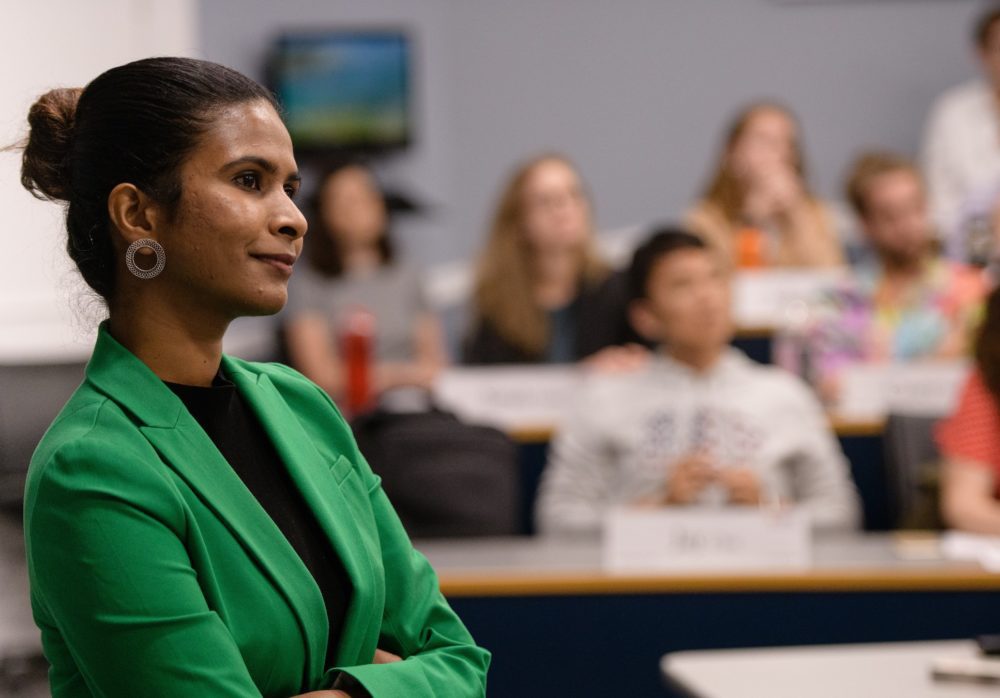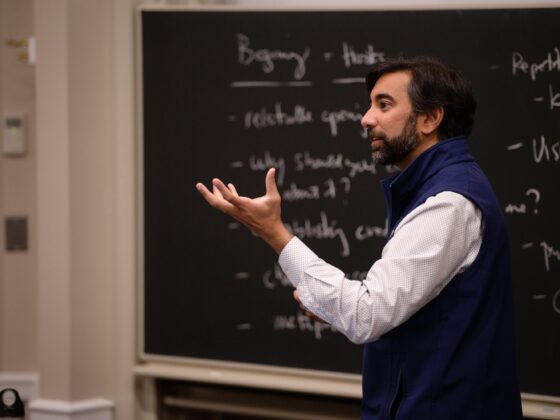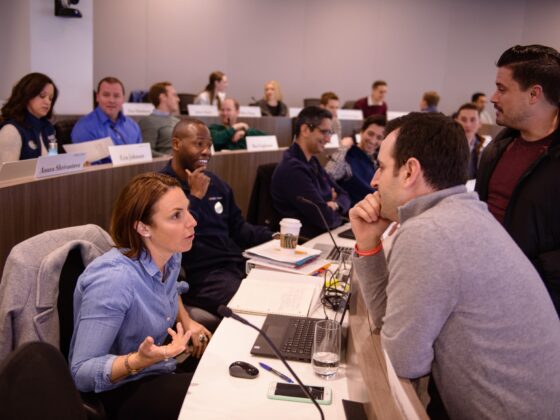As prospective students consider which MBA program is the best fit for them, they very quickly hear about the Darden case method, and are naturally curious to learn more. Darden’s MBA program is entirely focused around the student-centric learning experience, and classes are taught using the case method. We wanted to provide a few insights and resources on this topic, as it’s a popular discussion for MBA candidates across all our programs!
Q: What is the case method?
A: Through the core curriculum (three academic quarters for the full-time MBA and eight academic quarters for Executive MBA program), students gain an integrated perspective on the fundamentals of business through rich case discussions expertly facilitated by Darden’s faculty. Collaboration and teamwork are hallmarks of the Darden experience. The learning experience is spontaneous yet deliberate and contrasts sharply with a lecture-based approach.
Q: When there isn’t a clear right or wrong answer, how does the case method help students find the solution?
A: The case method is well suited for such situations in that it teaches you how to think through challenging decisions, develop arguments, see how the rest of the audience responds, and allows you to refine your arguments as the class adds to the conversation. The case method strengthens your ability to listen to each other’s arguments and helps you to develop a way of thinking and understanding the pros and cons of different decisions. It also teaches you how to defend your argument and understand the consequences of your decision making and viewpoint. The faculty help guide the conversation by asking probing questions and challenging you think about your proposals. This emulates reality in a way – your boss will not give you the answer, you’ll have to come up with solutions on your own or with your team. Learning via the case method makes that type of problem solving instinctual for our graduates.
Q: How do students prepare for case-based learning?
A: A critical part of the case method and the First Year experience is working with a learning team — a group of five to six students from across the different First Year sections — that provides students with support to work through and understand each case. Students stay with their learning team and in their First Year section throughout the core curriculum, further strengthening their relationships with their peers and sharpening their communication skills.
Before meeting with their learning team, each member of the team has read the case and worked on the assignment questions as best as they can. The learning team will decide together on how the group will go about discussing the cases. The following day, the case will be discussed in class so each student and collectively the learning teams can recalibrate to conclude what was missed, etc. This cycle continues throughout the core curriculum.
In the Executive MBA program, during the core curriculum, the class of roughly 135 students is divided into two sections that are shuffled periodically. All students are assigned a learning team at the start of the program, but students are also welcome to form their own groups as they navigate the core classes. Each learning team sets its own schedule, and teams will typically meet once or twice a week as students prepare for weeknight distance sessions and weekend residencies.
Q: What qualities and habits help students get the most out of the case method?
A: To get the most out of the case method, students must be intellectually curious, so that they can dig through the cases to uncover the issues, formulate a solution, and propose how to operationalize it. Students also need to be open-minded and willing to change their view points based on the feedback they receive from their peers. Since active participation in the class is essential, students who are not afraid to speak up and challenge one-another do well. We also hear from many current students that they chose the case method approach because they wanted to become more confident in articulating their ideas and challenging others in a safe and productive space!
Hear insights on teaching the case method from Professor Bobby Parmar
Earlier this year, Professor Bobby Parmar joined the Experience Darden podcast to share insights about the learning experience and teaching case method at Darden. Parmar describes himself as “the son of immigrants, father of two amazing young women, and by training a moral philosopher and social psychologist. When explaining case method, he shared:
“Case method works really well in ethics because it brings out the humanity of our students. They have a stake, they have a set of values, they are learning from each other. I always try to talk about Darden as a high engagement learning method – case method is an important part of that, it’s a cornerstone – but we do lots of different things that are high engagement, whether that’s simulations or projects or role plays, there’s lots of ways in which we first and foremost engage our students in the learning process. It’s not a passive process, it’s an active process, and case method is very good at that. We think together, we argue with each other, we learn from each other. When you’re in a classroom with all of these amazing folks from so many different backgrounds, you’re learning vicariously just by listening to their comments. You’re engaging more of your brain in the learning process in a case method style discussion because you’re engaging the social parts of the brain as well as the understanding of the topic.”
See Professor Rich Evans teaching a finance class with case method.
This video of Professor Rich Evans teaching a finance course through the case method in 2017 is still one of our favorites! Evans highlighted the educational experience of the case method:
“One of the reasons I think Darden has been ranked the No. 1 business education experience is the case method, and the power it has to help people have a positive learning experience. Every one of the case discussions across Darden starts with what we call a “cold call” – which is when I randomly select a student in the room, and it could be anyone, and I ask them to take us into the business problem at hand. Knowing that you could be asked to provide the basis for the rest of our discussion is a powerful motivator for students to come prepared to class, and to be ready to be engaged in a discussion about the topic. We use the Socratic method, so at the end of the day I didn’t teach anything – I ask questions of the students, so if I sample across the students and if I find that some are having a hard time understanding a concept, I’ll look for a student who seems like they’ve mastered that concept and use them and their experience and their understanding to try and help everybody get on the same page.”
Be sure to consult the Latest News regularly for the most updated news releases and media hits. Check out faculty thought leadership published on Ideas to Action. And stay connected with us via social media: Facebook, Instagram, LinkedIn, Twitter, WeChat
Pictured in header image: Darden Professor Roshni Raveendhran.





